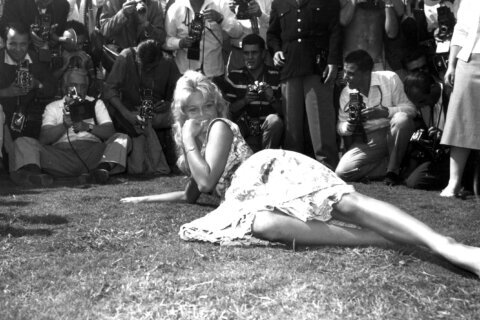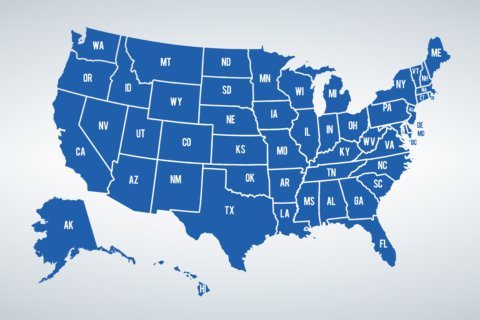(CNN) — The first time Laura Muckenhoupt felt a glimmer of hope after the death of her 22-year-old son Miles was the drive home from the Washington state facility that had turned his body into hundreds of pounds of soil.
There was an empty seat in the family pickup truck where Miles should have been sitting. But riding with her husband and daughter on the 12-hour drive home, Laura felt her son’s presence clearly.
“We’re going to grow him,” she remembered thinking. “We’re going to grow him, and we’re going to continue to be his parents and his sister and his friends.”
Human composting turns bodies into soil by speeding up “what happens on the forest floor,” according to Tom Harries, CEO of Earth Funeral, the human composting company the Muckenhoupt family worked with.
“What we’re doing is accelerating a completely natural process,” Harris told CNN. Human composting is emerging as an end-of-life alternative that is friendlier to the climate and the Earth — it is far less carbon-intensive than cremation and doesn’t use chemicals involved to preserve bodies in traditional burials.
In a haze of grief in the immediate aftermath of his death, the knowledge that her son’s soil represented a new beginning brought Muckenhoupt some measure of comfort. And in the years since, Miles’ soil has traveled and been planted as far as Indonesia and Tuscany, used to help grow passionfruit trees in Portugal and ferns in Hawaii. It’s fitting for Miles, a dancer who thrived in the outdoors.
At Muckenhoupt’s home, Miles’ soil was used to plant a rosebush in the garden. And much of the soil resides in a planter in the backyard, next to her son’s favorite hammock chair.
“Every time that rose bush blooms, you watch it with such anticipation,” Muckenhoupt said. “It’s such a gift, and it seems like a small visit from him, and it’s gorgeous.”
Composting your loved one’s remains feels different than cremation or burial, Muckenhoupt said.
“You have had your ceremony, and then the story ends,” she said. “With soil, the story is just beginning.”
How human composting works
Harries spent years working in the funeral industry but began rethinking it by contemplating his own mortality.
“One of the things that I really realized was I didn’t resonate personally with the existing options. I didn’t want to be buried and didn’t want to be cremated,” Harries said.
The rise of cremation has “been the absolute biggest trend in the funeral space” over the past few decades, Harries said, given it is less expensive and more convenient than traditional burial services. About 60% of people who die in the US are cremated, according to the Cremation Association of North America.
But cremation pollutes the climate, using predominantly natural gas to power the furnaces that burn the bodies. And traditional burial uses chemicals including formaldehyde and other chemicals used in embalming fluid.
Human composting takes surprisingly little to complete. A body is wrapped in a biodegradable shroud and placed in a long metal capsule — surrounded with a mixture of wood chips, mulch and wildflowers. As it decomposes, the body releases nitrogen and the added natural materials provide carbon. With the cask kept at an optimal temperature, it creates perfect conditions for microbes to break the body down at a molecular level.
At the end of 45 days, the cask is left with about 300 pounds of nutrient-rich soil, Harries said. Families can choose to take home as much or as little as they want, and Earth Funeral sends any remaining soil to conservation projects in Washington and California.
A clean death
The practice is becoming more popular; it has been legalized in 12 states with bills pending in eight others. Harries said Earth Funeral customers who are doing end of life planning for themselves or a loved one care about the Earth and the climate, or those who are passionate about the outdoors.
“This is their final act on Earth,” Harries said. “They’re thinking about kids and future generations.”
Kimberly Cooley-Reyes, 66, falls into that category. An avid gardener, Cooley-Rees found human composting after her best friend passed away several years ago and had a green burial. Doing her own end-of-life planning with human composting has given her a sense of peace.
“This is something that moves me,” Cooley-Reyes told CNN. “I am going back into the earth, and I will go back cleanly. I’m not going to cause pollution.”
Cooley-Reyes lives in San Francisco with her husband, in a home they’ve shared for almost 19 years not far from the beach. When she looks of out her bedroom window, she can see all the way to the Farallon Islands. Immediately below her bedroom window is the beloved garden she will one day amend as soil.
“It makes me feel immortal, quite frankly,” she said. “This is the only home I’ve ever owned; it’s the happiest place I’ve ever lived, so for me to be able to stay here is pretty special.”
The-CNN-Wire
™ & © 2024 Cable News Network, Inc., a Warner Bros. Discovery Company. All rights reserved.







